SRAM Rival 1 review
A simple solution with the right level of price vs performance
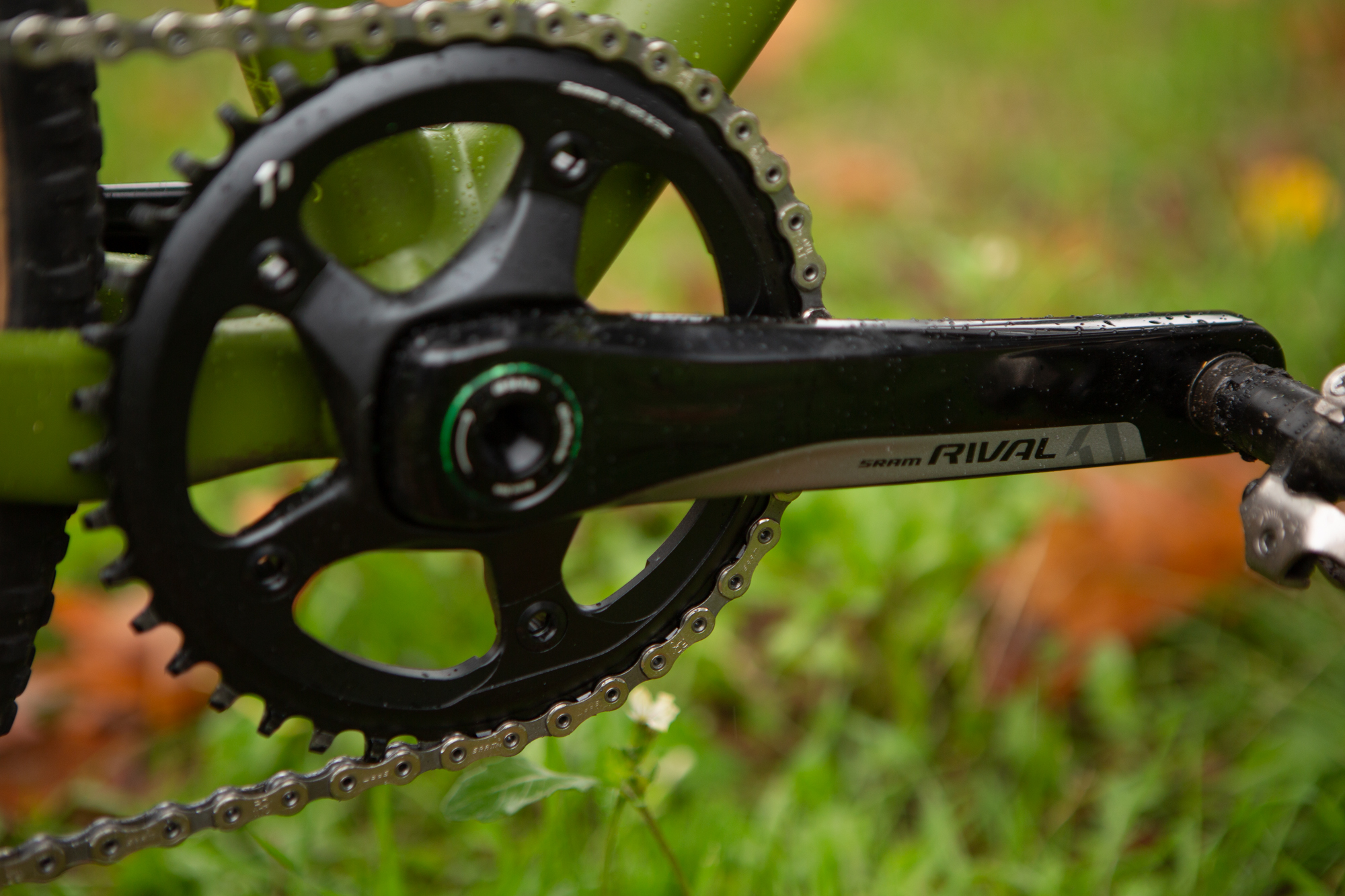
When it comes to performance, SRAM's Rival groupset will offer everything you need. It might not have the celebrity appeal of SRAM Red but it represents the working class groupset and you won't regret making the choice.
-
+
Inexpensive
-
+
Cage Lock technology
-
+
1:1 cable travel to derailleur movement
-
-
42 tooth max
You can trust Cycling Weekly.
In February 2019, SRAM changed the bike industry with the release of AXS. SRAM wasn't actually the first to drop 12 speed, but it was the only brand to announce a completely wireless system.
If you want the best, then SRAM AXS 1x is the obvious selection. However, the SRAM Rival 1x11 mechanical groupset represents some of the best value on the market. If you are looking at a new bike something with SRAM Rival 1x11 is often a marker of that first jump from best pricing to higher performance and it also makes a great option if you want to reinvigorate an older bike.
Shifters
There's no way to get away from comparisons to Shimano when it comes to a discussion of any groupset. For most people the first experience with integrated brake/shifter setups on drop bar bikes is going to be Shimano. When it comes to SRAM there's a noticeable difference to the shape of the upper part of the shifters.
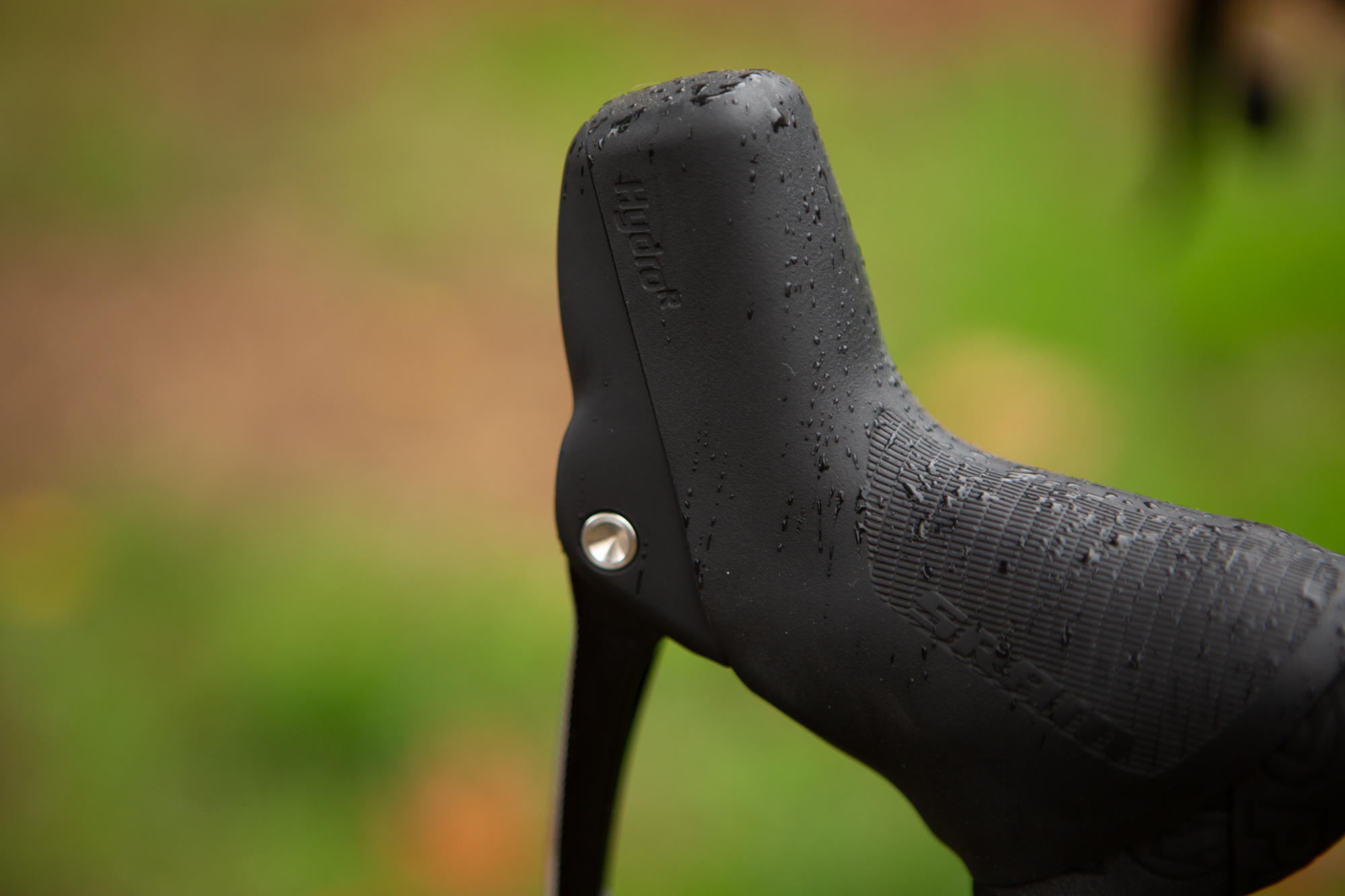
Unlike a cable pulled brake groupset, hydraulic disc groupsets need extra space above the brake lever. It's here that the master cylinder and fluid reservoir live. The SRAM design is boxier and taller than what you will find with a Shimano setup. As someone who likes to spend time holding that top section, when things get long and flat, I prefer the SRAM style. It's not a huge difference but it's subtly more comfortable.
Comfort also comes into play for those with smaller hands. A long shift lever helps with leverage and modulation when braking hard but if you have smaller hands it may be a hard reach. Both the brake and shift levers feature independent reach adjustment requiring only a small twist of a hex wrench.
Chainset
When it comes to a 1x setup arguably the piece that gets all the attention is the front chainset. Using only one chainring means weight savings as well as simplicity. For most people it's the simplicity that is the best feature.
When it comes to gravel riding it's easy to see the advantages of the simplicity 1x brings. Let your concentration remain with how to handle the environment instead of deciding which front chainring to use. If you guess the gearing wrong it's only a small adjustment to change gears and it's unlikely to upset the chassis of the bike.
The latest race content, interviews, features, reviews and expert buying guides, direct to your inbox!
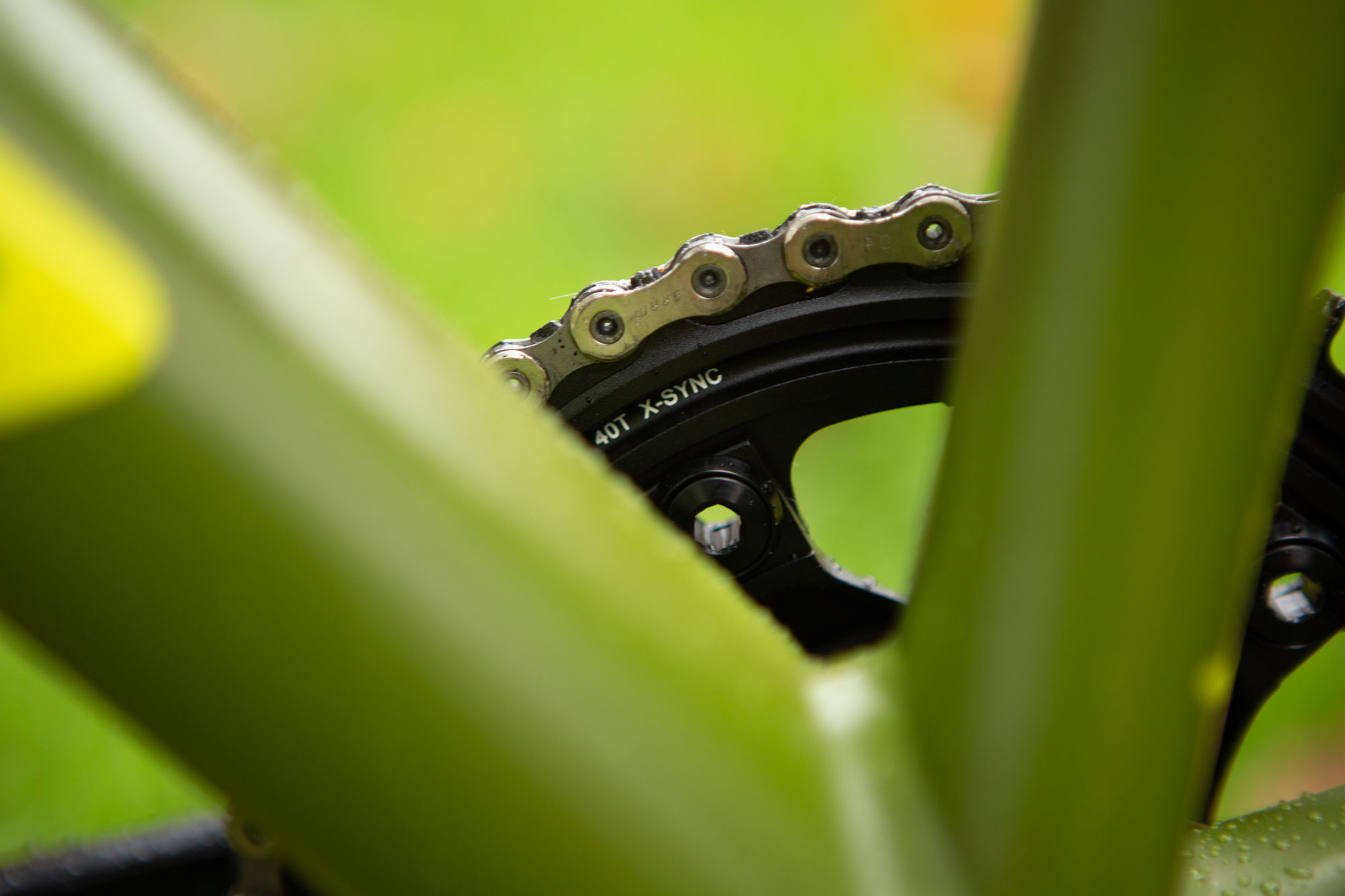
The tall, square, profile to the teeth, that SRAM calls X-SYNC, helps to engage the chain earlier than a traditional triangle tooth profile. When things get dusty, dirty, or muddy, there is a rounded slope to the edge of the tooth that helps make sure the chain continues to engage. With all that in mind, don't discount the utility of 1x drivetrains on the road. The array of 38T, 40T, 42T, 44T, 46T, 48T and 50T chainrings make plenty of gearing combinations available.
Whatever chainring you choose, SRAM Rival 1 cranksets use a forged aluminum construction. Forged aluminum is a good option to balance performance and price. Weight comes in at a quoted 799 grams for a 172.5 crank arm length, no bottom bracket, and a 42 tooth chainring. If you need a different crank arm length options include 165mm, 170mm, 172.5mm, 175mm.
Rear Derailleur
The Rival 1 rear derailleur is available in a long cage or medium cage version with a max tooth compatibility of 42, or 36 teeth. All of the technologies offered on the Force 1 derailleur show up on the Rival 1 derailleur as well. The only exception is a short cage version available at the Force level. Weight is also a differentiator between the two although it's a small difference. The claimed weight of 269 grams for a medium cage makes the Rival 1 rear derailleur 8 grams heavier than the equivalent Force version.
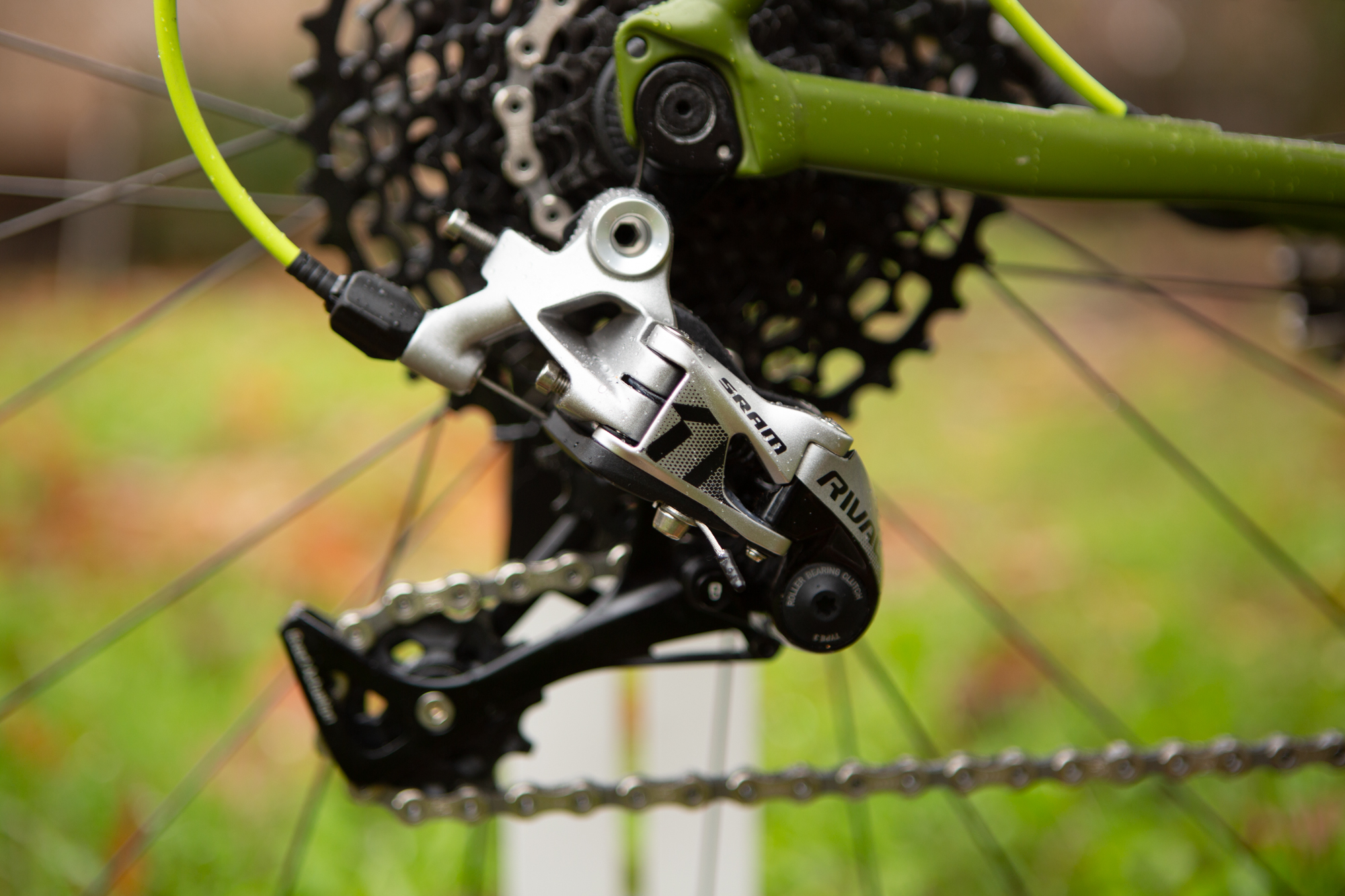
For me the most exciting part of the Rival 1 groupset is the rear derailleur. This is a groupset that just works and differentiation comes down to the little things. Two little things that set the SRAM Rival 1 rear derailleur apart are the roller bearing clutch and Cage Lock technology.
SRAM isn't unique in using clutch technology on a rear derailleur. What is unique is that there's no on and off switch for the Rival 1 groupset. I have never once felt like I needed to reduce whatever small amount of drag exists because of the clutch on a derailleur. On the other hand, I have many times forgotten to re-engage a clutch after a wheel change. It's a small detail but it makes the whole experience more pleasant.
http://www.youtube.com/watch?v=xrQV8qtKscw
Along the same lines is the Cage Lock feature. Move the bottom section of the derailleur forward to remove tension from the chain. Once in place, press a small button to lock it there, and now it's a simple thing to put the bike on a trainer or change the wheel. It's not a new feature and it's not a headline feature but it's the kind of thing that makes a real difference in day-to-day use.
Brakes
The SRAM Rival 1 hydraulic disc brakes are a thing of beauty. With the progress of time and technology, the best braking power has moved its way down the lineup - this performance now mirrors that of SRAM Red just a few years back.
The system is fully sealed and consists of forged aluminum disc calipers with steel-backed organic pads. Modulation is more than good enough for one finger braking.
Over technical gravel sections my preferred grip is thumb over the top of the hoods and four fingers on the front of the drop bar. I keep only my index finger wrapped around the very top of the lever and even with this grip there's more than enough power available.
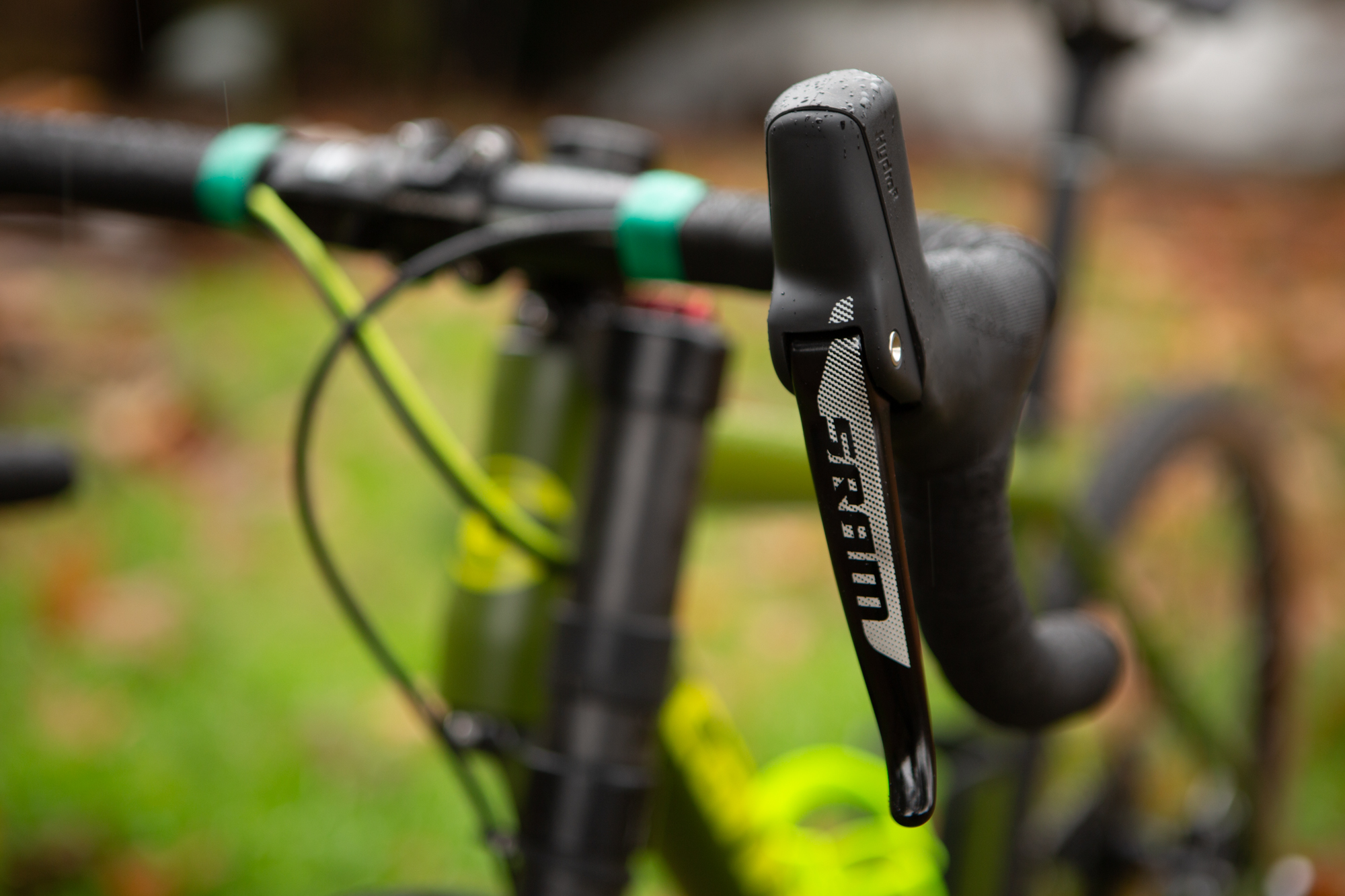
The one thing of note about the brakes is the use of DOT 5:1 fluid. Shimano brakes use mineral oil and swapping the two is not possible. Both Shimano and SRAM have technical documents outlining why they chose the respective fluids they chose. Both companies cite heat and water management as the reason that their fluid of choice is superior. In my experience they both perform the equally well, what's more important is that you use the correct fluid for your system.
The Ride
If you've never used SRAM before what you've likely heard about is Double Tap shifting. It does not mean two pushes to shift. Instead, it means one lever handles both upshifts and downshifts. When out on the bike, the Double Tap experience is what dominates my perception of the Rival 1 groupset.
It's so simple: push on the shift lever until it clicks a single time to move the chain one sprocket down the cassette into a harder gear. Push the shift lever past that first click, until you hear a second click to move the chain up the cassette a single sprocket. Push past both clicks, then release, and the chain will move up the cassette multiple sprockets. If you are moving from Shimano it's not hard to relearn the system and there are some advantages.
If you like to spend time in the drops the Double Tap system is easy to use. The brake lever is the farthest forward so it's not in the way of the shift lever. You can also either adjust the shift lever back towards the bars, or just hold it there when you want to, and it makes reaching from the drops even easier.
Outside of the Double Tap experience, my overall impression is that Rival 1 is a system that works well. Braking is solid. Shifting is fast and precise, and the hood shape is comfortable. Comparing the clutch to Shimano I find SRAM does a slightly better job controlling movement, but it's only a nitpick.
Value
Modern groupsets are very good. It really comes down to the small differences. In the case of SRAM, the Cage Lock Technology on the rear derailleur is a big selling point but is unlikely to be the deciding factor. Feel the levers in your hands and see what you like. If you choose SRAM the real question is which groupset makes sense.
The Rival 1 Hydraulic Disc groupset has an MSRP of $950/~ £979 and a weight of 2690g. The next logical move up the range is the Force 1 groupset. Force 1 has an MSRP of $1350/~ £1234, has all the same technologies, and weighs in at 2446g. If you are choosing the exact same setup it doesn't make much sense to choose Force over Rival unless that's how a bike comes.
What's more interesting is that once you've made the price jump up to Force a good deal on a Force AXS 1x12 system starts to come into reach. Rival gives all the performance you need at a great price. If you have the money for something more expensive Force AXS is the best upgrade, just don't overlook the cost of replacement parts when making a choice.
Josh hails from the Pacific Northwest of the United States but would prefer riding through the desert than the rain. He will happily talk for hours about the minutia of cycling tech but also has an understanding that most people just want things to work. He is a road cyclist at heart and doesn't care much if those roads are paved, dirt, or digital. Although he rarely races, if you ask him to ride from sunrise to sunset the answer will be yes.
Height: 5'9" Weight: 137 lb.
Rides: Orbea Orca Aero, Cannondale Topstone Lefty, Cannondale CAAD9, Trek Checkpoint, Priority Continuum Onyx